With all the talking, chatter, expounding, and expressing our opinions that goes with the open-ended cultural territory we all inhabit these days, it’s no wonder, just sayin’ is a popular linguistic add-on to many a modern conversation. Being a personal essayist, I’m no exception.
I’m guilty of using the phrase. It’s a profuse and ubiquitous concept and linguistic aid. The “just-sayin’” concept, if not the phrase, is evidenced in the blunt Twitter-style communication of our nation’s President. Supporters or not, sometimes we all shudder, “just-sayin’.” Now I shall break it down.
“What’s on your mind?” asks Facebook. To which, many FB members respond with a photo, a memory, a meme, a quote, a fleeting thought, a suggestion, prayer, advice, or simply an observation about one’s day, life, news, politics, the weather, and more.
Many of us Bloggers, online diarists, overshare as a career. We self-disclose with little abandon, as a matter of course. I guess it’s the definition of overshare, which perhaps has changed. It was once called diarrhea of the mouth. Anything goes in terms of sharing, as long as you tag on, just sayin’ at the end. It’s an information glut, otherwise known as “too much information” or TMI, for short.
The first amendment to our Constitution, the “free speech” one, gives every American freedom to speak and to write, without government interference. But, is there no restraint of another kind governing the content or the extent of our speech? I’m not sure. This might be a problem.
A couple of years ago, I binge-watched the first season of The Crown, on Netflix. A striking cinematic and relational contrast was established on screen between the two sisters, Elizabeth (the Queen) and Margaret, clearly not the Queen.
In the early days as Queen, Elizabeth appears stuffy, self-important, relationally distant, and insecure. Undoubtedly her demeanor has been the result of several things, not least of which is her anointing as head of the Church of England, and her sworn duty to the people of the United Kingdom, over which her government presides. Her sister, on the other hand, without a role of such magnitude, has had the luxury and freedom to be fun-loving, individualistic, sarcastic, jovial, even frivolous in her doings and in her speech
Margaret is portrayed as the real and likable one, and Elizabeth, unembodied by sentiment or individuality of any sort is shown to be the stern, unimaginative, serious sister, by comparison. In fact, the Queen was forbidden by the Prime Minister (Churchill) as well as her grandmother (Queen Mary) to ever show individuality – she was to remain always, the Crown, and none other.
As to speech, the contrast between the sisters, was evidenced by restraint and duty to country above all else in Elizabeth, versus no holds barred, just sayin’ ramblings of a privileged individual in Margaret; that privilege, granted to her by the Crown itself. Both sisters by virtue of their royal birth had the right to expound publicly. However, Elizabeth’s restraint, even her silence is considered her primary role as Sovereign.
We Americans, known for our independent and individualistic spirit, relate more readily to Margaret, and later to Diana (the people’s princess). We don’t understand Elizabeth’s restraint, silence, or duty to something higher than herself – we really don’t get it; we don’t get her and wish her to just loosen up. In stark contrast, contemporary Americans appear to be the epitome of the free-wheeling, unrestrained, just sayin’ crowd.
Another use of the just sayin’ suffix, is in the vein of the, “no offense, but…” criticism. For example, “no offense, but your hair is so 1990, you would look cute with so-and-so’s haircut.” It’s a form of masking or softening a critical or snipey* comment, so as not to be perceived as a bitchy human being. After all, “I’m just sayin’!”
*A note about my made-up words, called neologisms: spell-checker, auto-correct and other such monitors of my English grammar, syntax, and such, does not like the word snipey, which I made up. I like it so I added it to my dictionary – just sayin’.





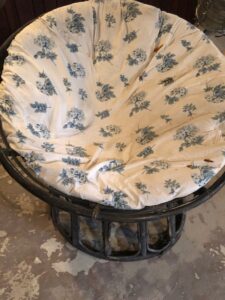
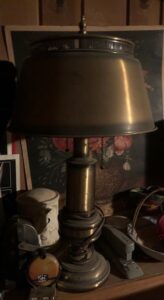
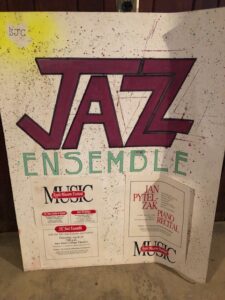
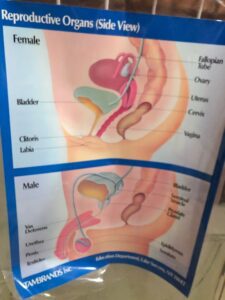
 from my human sexuality classes that would fit right into the décor of your and my gynecologist/obstetrician’s office;
from my human sexuality classes that would fit right into the décor of your and my gynecologist/obstetrician’s office;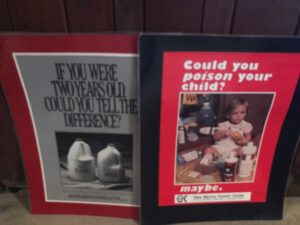 posters from poison control used at a booth at a health fair my college committee on the environment sponsored
posters from poison control used at a booth at a health fair my college committee on the environment sponsored and a board game I created for my American Subcultures class.
and a board game I created for my American Subcultures class.